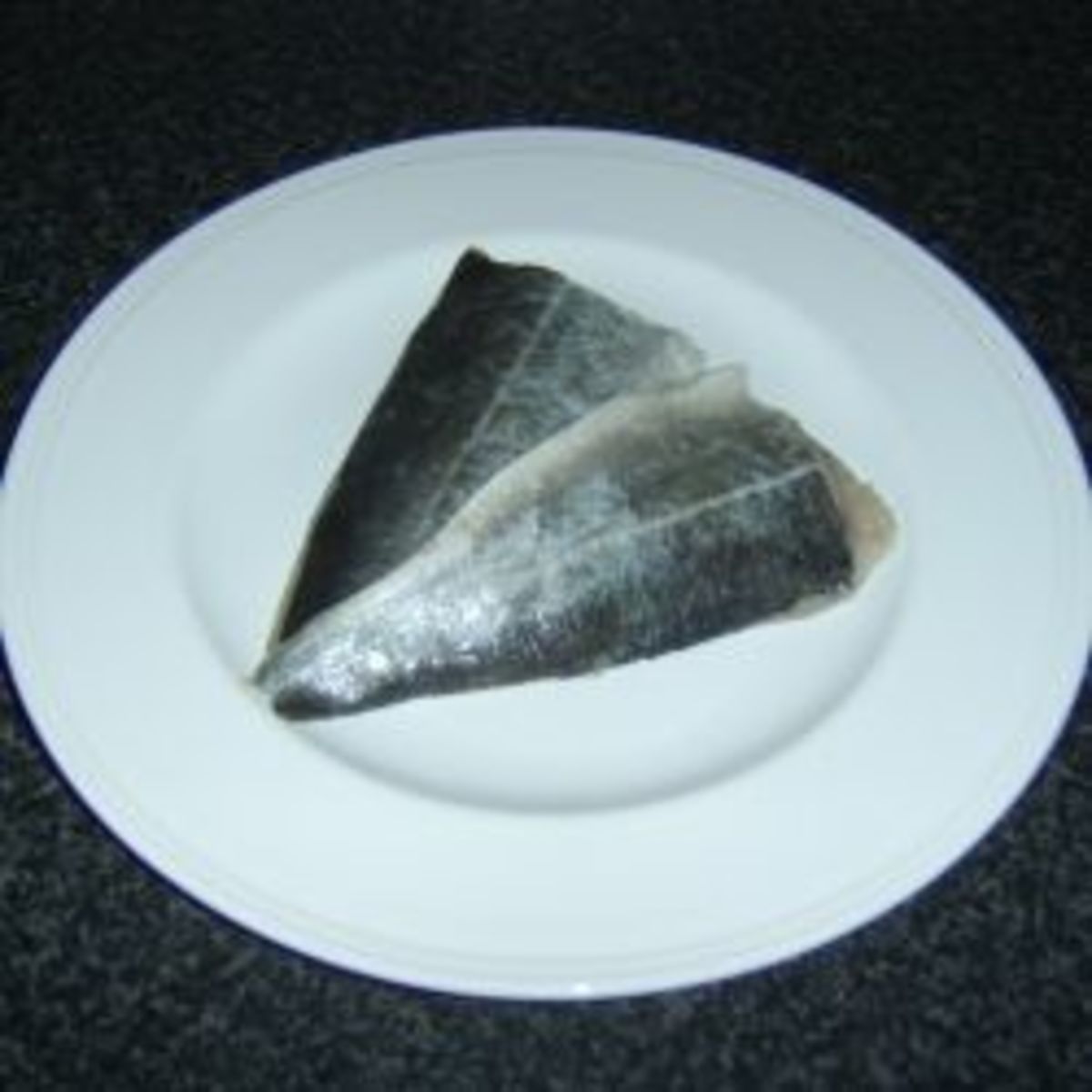How To Buy Fresh Fish At The Fish Market

I love fish. Since childhood I’ve been having different types of fish. Fish curry, grilled fish and fried fish… I love it all. During school vacations I used to spend holidays with grandma. I’ve loved every moment I’ve spent at our ancestral home since childhood. Our entire family yet meets at the ancestral home, but only during Christmas. Every time Grandma would to go to the fish market I would go along with her. I used to love seeing the different varieties of fish at the fish market.

I used to observe grandma as she would choose her fish. Not everything on display at a fish market is a fresh catch. If the fish is not fresh or has been iced for many days it loses its freshness. Furthermore fish that is not fresh has a peculiar taste with a slight odor. Fresh fish has minimal odor when cooked. The lines below offer practical tips to ensure you buy fresh fish.

Ways to ensure you are buying fresh fish at the Fish market
Press the body of the fish with your fingers
When you hold the fish and press, the fish should feel firm. Fish that has gone bad or iced for too long becomes soft. A firm body texture on the fish indicates the fish is fresh. Similarly soft of soggy textures suggest the fish is not fresh. When you press down upon fish that is not fresh fish it forms a slight hollow impression. Fresh fish always springs back to its original shape when pressed.

Lookout for a Shiny surface and tight clinging scales
Fresh fish always have shiny texture. Fish scales are intact when the fish is fresh. However, if the fish is not fresh the scales on the body of the fish are usually disheveled. The fish scales either come off or are asymmetrical when fish is iced/refrigerated for too long or has gone bad. Fresh fish skin always has a shiny glaze and symmetrical scales on their body.
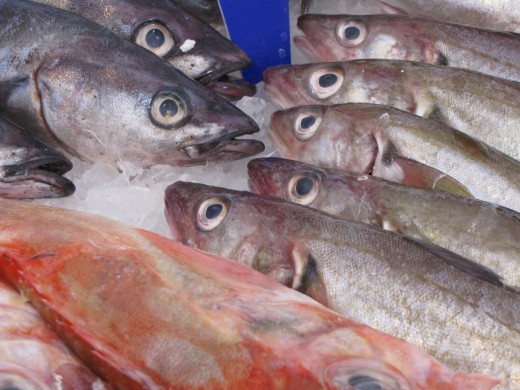
Check the eyes of the Fish
The expression of the fish says a lot about the fish. Always buy fish that have bright clear eyes. The eyes of fish that is not fresh or have gone bad are sunken and have a glazed covering on their eyes. When you see bright clear eyes on fish it is an indication the fish is fresh catch.

Lookout for the Fish Smile
An easy way to determine if fish is fresh is by looking at the appearance near the mouth. When you see bright eyes and a smiling face, the fish is fresh. If the fish has blurry eyes or has an angry looking face it indicates the fish has gone bad or is spoiled. Fresh fish always have radiance on their face, while bad fish do not have luster on their face.
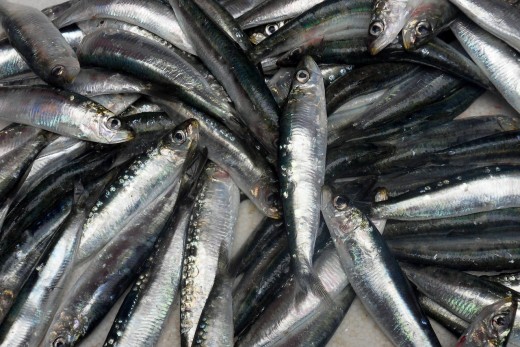
Gills should be dark red
The color of fish gills is also an indication whether fish is fresh or has gone bad. When you are at a fish market open the gills slightly and have a look at the color inside. There should be a vivid freshness to the gills. Gills that are bright red or bright maroonish-red in color are an indication that fish is fresh. If you find the color of gills without luster or pale in color it’s an indication the fish is not fresh or has gone bad. Also fish that has gone bad develops a whitish sheath on the gills.
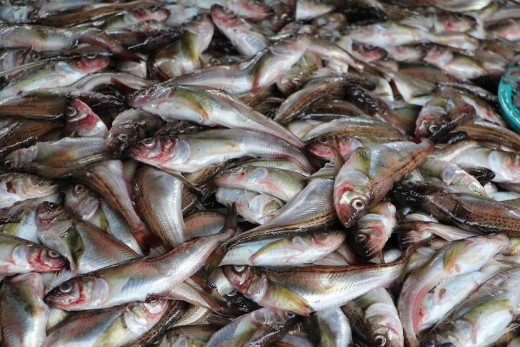
Check texture when you buy fillet fish
When you buy fillet fish it is important you check the texture of fish. The fish should feel firm and the pattern on the cuts should be close knit. A close knit pattern on fillet fish indicates the fish is fresh. As meat is exposed to air for long duration, the close knit pattern on fish opens allowing moisture to penetrate. When fillet cuts have wide open flesh patterns it’s an indication the fish has been in the freezer for many days. Furthermore wide knit fillet fish patterns are an indication the fish has lost its firmness. Furthermore the chance of bacterial growth is higher when fillet cuts have wide knit patterns. When you are buying fillet fish, always opt for tight knit or close knit patterns on fish.

Smell fish before you buy
Once you start buying fish regularly you develop a keen sense of smelling fish. Sea fish, river fish and freshwater fish…each have a distinctive aroma. Sea fish has a fresh aroma. The gills are a nice place to smell the fish. River fish have a muddy smell near the gills; it’s as if you can almost get the smell of wet earth when you smell river fish. Freshwater fish have a neutral smell; you don’t get a fishy smell from fish that are cultured. When fish goes bad it emits a peculiar strong odor. You can instantaneously tell the pungent stench of bad fish.
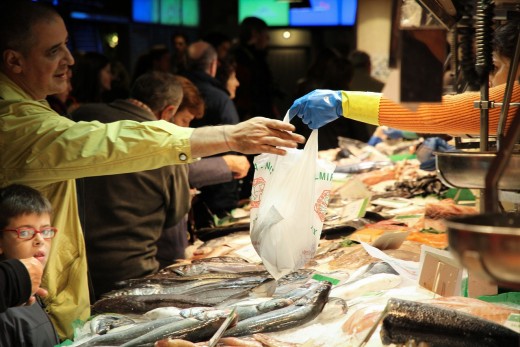
Points to Remember
- · The shelf life is fish is far less than other meats.
- · 5 days is the maximum holding time for fresh fish.
- · You have to realize seafood deteriorates much faster that other meats and once bacterial growth develops fish goes bad and loses its natural flavor.
- · Consider buying seasonal fish. Due to availability and demand you always find a fresh catch with seasonal fish.






